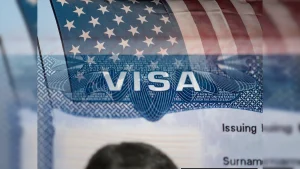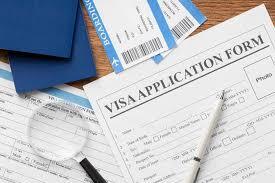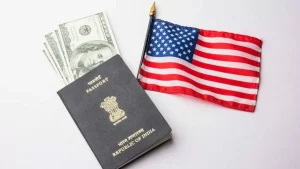Washington D.C. – The New US Visa Rule represents a significant shift in American immigration policy as the United States prepares to require certain foreign nationals to pay visa bonds of up to $15,000. This pilot program, announced by the US State Department on Monday, aims to reduce visa overstays through financial deterrents and marks another step in President Donald Trump’s continued efforts to tighten immigration controls since returning to office in January.
The New US Visa Rule will specifically target applicants for B-1 business and B-2 tourist visas from countries identified as high-risk for visa overstays. Starting August 20, 2025, this 12-month pilot program will fundamentally change how certain international travelers approach US visa applications and could significantly impact global tourism patterns.
Understanding the New Visa Bond Requirements

Under the New US Visa Rule, consular officers will have the authority to require covered nonimmigrant visa applicants to post bonds ranging from $5,000 to $15,000 as a condition of visa issuance. According to the US State Department notice scheduled for publication in the Federal Register, these bonds serve as financial guarantees that travelers will comply with their visa terms.
The New US Visa Rule operates on a straightforward principle: travelers who adhere to their visa conditions and leave the United States within the permitted timeframe will receive full refunds of their bond money. However, those who remain in the country beyond their authorized duration will forfeit the entire bond amount to the US government.
Additionally, the New US Visa Rule includes restrictions on entry and exit points, requiring bond-paying travelers to use only pre-selected airports in the United States. This limitation adds another layer of control and monitoring to the visa process.
Countries and Individuals Affected by the Policy
The New US Visa Rule specifically targets nationals from countries with documented high visa overstay rates, as identified in a 2023 Department of Homeland Security report. While the State Department has not released the complete list of affected countries, officials have indicated that the selection criteria extend beyond overstay statistics.
According to State Department officials, the New US Visa Rule will also apply to applicants from countries “where screening and vetting information is deemed deficient” or where citizenship can be acquired through investment programs without residency requirements. The comprehensive selection criteria include “high overstay rates, screening and vetting deficiencies, concerns regarding acquisition of citizenship by investment without a residency requirement, and foreign policy considerations.”
Also Read: Bold Reply By Russia On Trump Threats: ‘Can’t Force Countries to Choose Trade Partners’
Data from the Department of Homeland Security and US Customs and Border Protection suggests that nations such as Chad, Eritrea, Haiti, Myanmar, Yemen, Burundi, Djibouti, and Togo have demonstrated high overstay rates, making them potential targets for the New US Visa Rule implementation.
Implementation Mechanics and Operational Details


The New US Visa Rule functions as a financial deterrent system designed to encourage compliance with visa terms. Bond amounts will be determined by consular officers based on individual risk assessments, with the minimum bond set at $5,000 and the maximum reaching $15,000.
The pilot program applies exclusively to B-1 business and B-2 tourist visa applicants, requiring them to travel through designated airports for both entry and exit. The State Department acknowledges that it cannot precisely estimate how many individuals will be affected by the New US Visa Rule, but officials have indicated that both the criteria and country list may be updated periodically based on program results and changing circumstances.
Trump Administration’s National Security Justification
The New US Visa Rule reflects the Trump administration’s broader immigration enforcement strategy and national security priorities. A State Department spokesperson emphasized that “the pilot reinforces the Trump administration’s commitment to enforcing US immigration laws and safeguarding US national security.”
Official documentation describes the New US Visa Rule as “a key pillar of the Trump administration’s foreign policy to protect the United States from the clear national security threat posed by visa overstays.” This characterization positions the policy within the administration’s comprehensive approach to immigration control and border security.
The current program builds upon a similar pilot introduced in November 2020 during Trump’s first presidential term. However, that earlier initiative was never fully implemented due to the COVID-19 pandemic and its dramatic impact on global travel patterns.
Industry Concerns and Economic Implications


Travel industry representatives have expressed concerns about the potential economic impact of the New US Visa Rule on American tourism. While industry analysts estimate that the program may have a relatively narrow scope, affecting approximately 2,000 applicants from countries with low travel volumes, the broader implications for international tourism remain significant.
Industry associations worry that the New US Visa Rule could position the United States as having among the highest, if not the highest, visitor visa fees globally. This development occurs amid existing signs of declining international interest in US travel, including transatlantic airfares dropping to pre-pandemic levels and travel from Canada and Mexico declining by 20% year-over-year.
The financial burden imposed by the New US Visa Rule may further discourage international visitors, potentially impacting the broader American tourism economy and related industries that depend on foreign tourist spending for revenue and employment opportunities.

